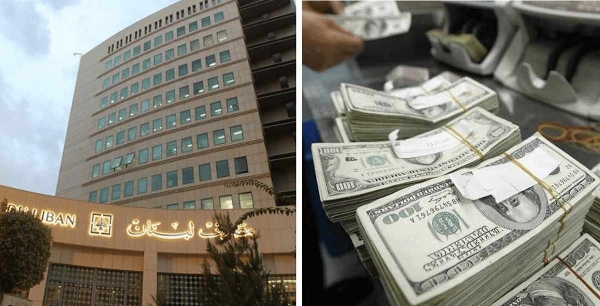Heritage Preservation in the Arab World
The old cities, or traditional quarters, were initially the residences of wealthier families. Nowadays, they generally host poorer communities, dwellers as well as renters, after the former opted for other living options in the expanding metropolis. This implies that inhabitants of these quarters now lack the means for investing in maintenance. But this also indicates that preservation efforts will directly influence the livelihood of small city centers and increase the potential for job creation and business opportunities among the locals.
Today, the small cities have become small quarters within larger cities. A World Bank report from 2010 documented the capacity of the old cities of Casablanca and Fez as only 2% and 12% respectively of the entirety of each city (Bigio, and Licciardi). Yet these spaces with their markets are still used by residents of the larger city for basic goods and necessities.
Historical sites around the region have different shortcomings. In Lebanon, Tyre and Baalbeck have become the tranquil rather than the bustling centers like other old cities in the region. Old Tripoli, due to minimal attention, has been aesthetically damaged, and the livelihood of its residents deteriorated. In Cairo, many Islamic sites need protection from encroaching buildings, and the underground water and sewage networks of nearby villages threaten the pyramids of Egypt (Helmy, and Cooper 196). The old city of Aleppo has been threatened by physical decline as a result of growth pressures and arbitrary planning policies (population increased from 250,000 in the 20th century, to 2.5 million at the beginning of the 21st) (Spiekermann, and Gangler 16).
Governments have failed to draft policies that address problems of maintenance and to coordinate with policies on tourism. But with the increased activism of non-governmental agencies, international organizations and the private sector, many operations are now under way.
Of many examples, Jordan and Syria are among the more positive ones. In Jordan, funds were used to widen accesses to the Medinas, and to create new riding trails for better recreational options. Surrounding Wadi Musa, dams have been built to reduce flooding. A more easily applicable mechanism is the use of entrance fees for maintenance purposes; in Petra, 25% of revenues are allocated to this end (Bigio, and Licciardi 26). Aleppo has seen a series of interventions as a result of collaboration between the City of Aleppo and the German Technical Corporation since 1993. This project for urban renewal has so far created an exhibition about rehabilitation, restored some monuments with the cooperation of private investments, and begun plans for preserving the citadel and uncovering the western wall of the city.
The Lebanese case has not been rosy. Post-war reconstruction was focused on instant results that it neglected the rich heritage of Beirut. The inadequacy of legislation on construction has rendered construction to the service of real estate and tourist attraction. The one law addressing heritage preservation dates back to 1933 and only targets buildings from the 1700s. The post-war period queued in the reconstruction of damaged areas, and legislation let the private sector be in charge of this undertaking. Today the trend of ‘refurbishing’ has stretched to areas that were not even affected by the war. However recent efforts by the civil community have been surprisingly effective at raising significant awareness about the value and importance of Beirut’s older buildings.
Nevertheless, efforts to reclaim the significance of these sites are futile if not accompanied by policies that provide an institutional framework for the management and adequate rehabilitation of these urban spaces. These efforts should also attend to details like infrastructure development, environmental concerns and projections for the tourism industry.
Resources:
- Alabaster, Olivia. “NGO petitions to protect alleged Phoenician wall.” Daily Star Lebanon. 09 Nov 2011: n. page. Web. 28 Feb. 2012.
- Badescu, Gruia. “”Do you want to go to Solidere?”: Architectural reconstruction and post-war reconciliation in Beirut.” Middle East Political and Economic Institute. Middle East Political and
- Bigio , Anthony , and Guido Licciardi. “The Urban Rehabilitation of Medinas: The World Bank Experience in the Middle East and North Africa.” World Bank. Urban Development and Local Government, May 2010. Web. 25 Feb 2012.
- Byrns, Karah. “Beirut: Under Destruction.” Executive Magazine. 12 Apr 2011: n. page. Web. 28 Feb. 2012
- Helmy, Eman, and Chris Cooper. «Sustainable Tourism Planning in the Arab World: The Egyptian Case.» Cultural Heritage and Development in the Arab World. Ed. Hassan Fekri, Ed. De Trafford Aloisia and Ed. Youssef Mohsen. Alexandria: The Bibliothetica Alexandrina, 2008. 175-204.
- Spiekermann, Meinolf, and Anette Gangler. “Urban Heritage Preservation and Tourism Development.” Integrated Urban Development in the City of Aleppo. N.p., 2003. Web. 25 Feb 2012
- Tadmoury , Khaled. “Cultural Heritage in Lebanon: Between the War of the Past and Future Urban Development.” Cultural Heritage and Development in the Arab World. Ed. Hassan Fekri, Ed. De Trafford Aloisia and Ed. Youssef Mohsen. Alexandria: The Bibliothetica Alexandrina, 2008. 75-88.








Leave A Comment